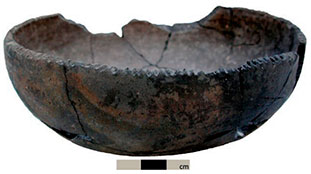Despite the definition that identifies palenques (communities of maroons or rebels) in Cuba and other Caribbean and Latinamerican countries with the African slaves, the evidence points to a significant participation of the natives (indian).
In 1503 the then Governor of Hispaniola Nicolas de Ovando informed the Crown that Tainos indian and Africans often escaped together, using the knowledge of the territories by the Indians «to survive and evade the Spanish patrols.» (1)
The existence of the palenques in Cuba of up to 300 or 400 members was confirmed to the Spanish Crown by the explorer Lucas Vasquez de Ayllón, sent to the Island in 1520, although there are references of uprisings of Indians from long before.
The silence surrounding indigenous participation in the palenques is not an isolated event. This forgetfulness is reflected in other aspects of the formation of the Cuban nation, despite there are enough elements of its influence in language, gastronomy, toponymy and other cultural expressions.
The bohio (house of table and branches of palm), the cassava (bread made of yucca or manioc), words like cabuya (rope) and geographical denominations like Güaimaro or Guamá, are small samples of a cultural inheritance that survives mixed with legacies of other origins.
Indigenous tradition
Archaeological evidence shows that after the concentration of Aborigines in so-called Indian villages such as Our Lady of the Assumption of Guanabacoa – since 1554 – some used pottery as a way of life, starting with indigenous tradition and also that brought by Africans slaves.
Researchers such as archaeologist Lisette Roura (2) point out that the documentary references of the Indians and their descendants are still evident in the first half of the 18th century in the town of San Cristobal de La Habana and not only in Guanabacoa, where they were concentrated.

The specialist considers that incised Aboriginal vessel on the rim, found in the excavations in the old Convent of San Francisco de Asís in Havana is a demonstration of «coexistence between Europeans, Africans and Aborigines, and the survival of the indigenous cultural machinery, regardless of technologies imported from Europe.»
Roura indicated that in the generality was maintained the circular shape of the containers – in many cases of larger sizes than the pre-Hispanic ones-, the convex bottom and the occasional presence of decoration incised in the edge to indicate its origin.
Artisanal Market
It is curious in this context to observe how Cuban handicrafts are nowadays almost exclusively centered on the traditions of African origin, obviating the aboriginal legacy.
Archaeological evidences show the elaboration of carved stones and bones, the use of shells, utensils (Pots and pans) and pottery as other indigenous cultures of the continent.
Still, scholars such as Ismael Sarmiento Ramírez consider pitiful the absence of artisan production with the imprint of Aboriginal cultures (3) .
One justification that could be drawn is the absence of significant indigenous communities in Cuba, contrary to what happens in other nations of the region such as Bolivia or Mexico, where the handicrafts of the Aborigines have a significant weight.
However, there are also examples such as the Dominican Republic, where the Aboriginal population was practically extinct, but its cultural heritage is visible to a much greater extent than in Cuba, especially in the artisanal market.
Revaluation of the Indian cultural heritage
Given what some see as an excessive mercantilism of these manifestations, I once asked the Venezuelan anthropologist Esteban Emilio Mosonyi whether commercial approaches to tourism support or undermine cultural recovery.

According to him, «for there to be social and cultural tourism, there must have been mercantilist tourism before. I defend these processes even if they start contaminated. If we are looking for the pure human being, virtues excelsas in all its manifestations, maybe we are talking about an abstraction that historically does not exist».
Just a look at the many archaeological pieces and rock paintings of the Aborigines makes it seem feasible to recover or take advantage of an indigenous handicraft.
Even though it was contaminated with mercantilism, Aboriginal inspiration in the craft could be a contribution to the revaluation of the Indian cultural heritage, hitherto limited to the domain of a few scholars.
Only a glance at the numerous archaeological pieces and rock paintings of the Aborigines makes it seem feasible to recover or take advantage of an indigenous handicraft. It could be a contribution to the revaluation of the Indian cultural heritage, hitherto limited to the domain of a few Scholars.
Notes:
1. Extinción: Ideologías contra Indigenismo en el Caribe. Forte, Maximilian C.
2. Acercamiento a los procesos sociohistóricos vinculados con la descendencia aborigen en La Habana colonial. Roura Álvarez, Lisette . Boletín del Archivo Nacional, enero-diciembre 2014. La Habana (http://www.grupokaweiro.hol.es/index.php/144-art-acercamiento-procesos-sociohistoricos-descendencia-aborigen-habana-colonial-es )
3. La artesanía popular tradicional cubana: del legado aborigen al utillaje mambí. Estudios de historia social y económica de América, 1996, n.13, p. 487-519. ISSN 0214-2236
